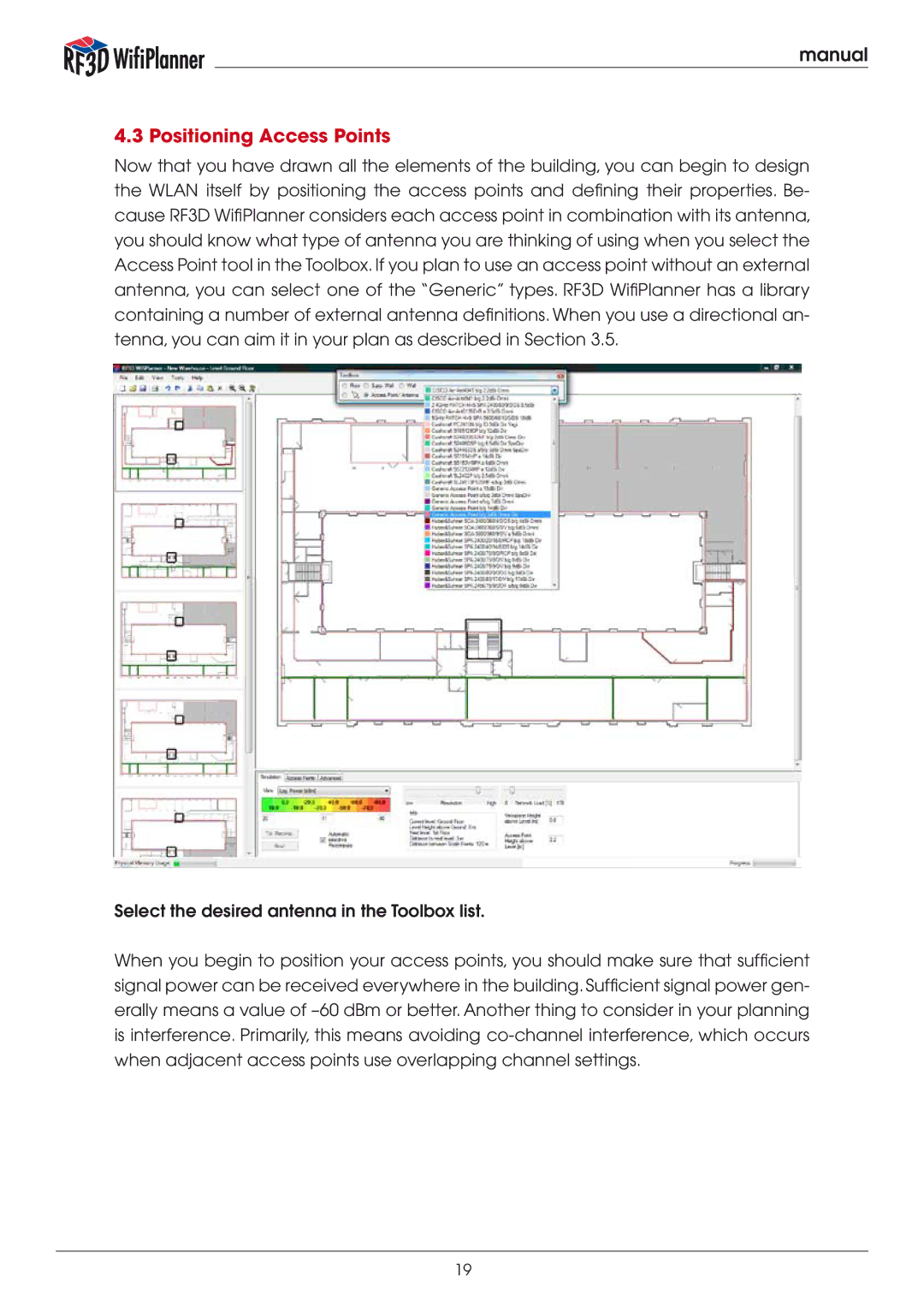
manual
4.3 Positioning Access Points
Now that you have drawn all the elements of the building, you can begin to design the WLAN itself by positioning the access points and defining their properties. Be- cause RF3D WifiPlanner considers each access point in combination with its antenna, you should know what type of antenna you are thinking of using when you select the Access Point tool in the Toolbox. If you plan to use an access point without an external antenna, you can select one of the “Generic” types. RF3D WifiPlanner has a library containing a number of external antenna definitions. When you use a directional an- tenna, you can aim it in your plan as described in Section 3.5.
Select the desired antenna in the Toolbox list.
When you begin to position your access points, you should make sure that sufficient signal power can be received everywhere in the building. Sufficient signal power gen- erally means a value of
19
